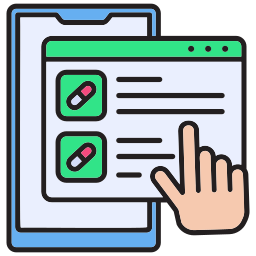Getting into the U.S. healthcare market means dealing with EHR integration early on. For SaMD companies that already have FDA clearance and traction in Europe, integration isn’t just a checkbox. It’s what determines whether physicians can adopt your product or not.
You need to be inside the physician’s workflow. That means letting them order tests, review results, and push data directly from their EHR. If your platform doesn’t integrate, adoption slows down. So, integration becomes less of a technical hurdle and more of a strategic decision.
We recently worked with a CTO from a European company building a smartphone-based heart rhythm monitoring solution. They wanted a fast, flexible way to plug into Epic without relying entirely on external platforms. That’s when we walked through what it takes to scale integration efforts in the U.S.
Middleware Looks Easy. Until It’s Not.
Solutions like Redox and Health Gorilla are often the starting point. They offer prebuilt APIs, faster go-to-market, and lower upfront effort. But for companies planning to scale or raise funds, the downsides add up fast.
Here’s what usually comes up:
- Recurring fees: Redox alone can cost $50,000 per year, plus $10,000 or more per hospital connection.
- Limited control: You’re stuck working within their architecture. Custom features, experiments, or speed improvements are difficult to implement.
- No ownership of integration IP: This becomes a sticking point when investors or enterprise buyers ask how defensible your tech is.
Several teams we've worked with started on middleware. Then they switched, looking for more flexibility and long-term value.
A Better Path: Build It Once, Use It Across EHRs
At Mindbowser, we don’t offer a one-size-fits-all integration tool. We work alongside your team to build a custom integration engine that’s FHIR-compatible, production-ready, and entirely under your control.
Here’s our process:
- Technical Discovery
We start with a $10K technical discovery sprint. This covers feasibility analysis, integration mapping, and architecture planning. If you move into development within 30 days, we convert the discovery cost into dev credits—so you’re not paying extra to plan right. - Smart on FHIR Development
We build apps that work inside EHR systems like Epic. Physicians can launch your product directly from the EHR, use your dashboard, and interact with patient data without leaving their workflow.
Related Read: Decoding SMART on FHIR for Healthcare Interoperability
- Custom Microservices
We create Docker-based microservices that handle everything from user authentication to secure FHIR/HL7 data exchange. We also ensure your integration meets HIPAA and PHI compliance requirements from day one. - Full Ownership and Deployment
You deploy everything in your own infrastructure. This gives your team full control over scaling, maintenance, and future development. No lock-in. No surprises.
Want to see what that looks like in real projects? Explore our Healthcare Interoperability Solutions and EHR Integration Services.
Supporting More Than Just Epic EHR
One of the biggest misconceptions is that every new EHR integration requires starting over. That’s not the case with our approach.
We design the architecture to be modular and reusable:
- 80% of the codebase works across EHRs like Epic, Athenahealth, Cerner by Oracle, and Meditech
- Future integrations take half the time and budget
- You manage one unified integration engine instead of multiple point-to-point solutions
That’s how teams move faster without rebuilding from scratch each time they need to add a new partner.

Use Cases You Can’t Unlock with Middleware Alone
Owning your integration engine opens up opportunities that third-party middleware can’t support out of the box:
- Patient onboarding flows triggered from within the EHR
- Custom alerts when readings cross clinical thresholds
- Native EHR dashboards that surface real-time insights
- Structured FHIR data pipelines built for AI model training or analytics
You don’t need to depend on someone else’s roadmap. You build what your users need—on your terms.
Summary
If you’re entering the U.S. market, integration with EHRs is one of the most important decisions you’ll make. Going the middleware route works for quick pilots, but it rarely scales well. Building your engine takes more upfront planning but gives you long-term control, faster iteration, and stronger defensibility.
This approach has worked for digital health companies looking to move fast without giving up flexibility. If you’re in the same position, we can help you get there.
🎯 Conclusion: Control Your Stack, Control Your Future
For product leaders in digital health, the EHR integration decision isn’t just about timelines and APIs—it’s about the long game. Ownership. Speed. Valuation. And above all, control.
At Mindbowser, we’ve helped remote monitoring companies, digital therapeutics teams, and SaMD pioneers build flexible, scalable EHR integrations that become true engines of growth.
Ready to take control of your integration roadmap?
👉 Book a free discovery call with our healthcare team to explore how we can help you build faster, smarter, and more sustainably.

Pravin Uttarwar, CTO of Mindbowser
As the CTO of Mindbowser, a healthcare-focused software development company, I am dedicated to delivering cutting-edge digital solutions that transform patient care and operational efficiency. With over 16 years of experience and as an MIT alumnus, I specialize in healthcare interoperability, FHIR-compliant systems, and AI-powered platforms, crafting scalable products and architectures tailored to the unique needs of healthcare providers and enterprises.
I have spearheaded the development of over 100 products and platforms, guiding them from concept to full-fledged solutions. My expertise extends to scaling remote tech teams, driving EHR integrations, and building secure, cloud-native healthcare solutions. By shaping technology visions and roadmaps, I help clients achieve long-term growth and success in the rapidly evolving healthcare landscape.
HealthConnect CoPilot enabled us to access real-time patient health data through integration with Apple HealthKit, enhancing care delivery while maintaining HIPAA compliance. This led to personalized care and improved outcomes for patients.

AI-enhanced Obstetrics Clinical Decision Support Platform
HealthConnect CoPilot's integration with Epic's Hyperspace has transformed our workflow. Automated post-delivery examinations and HL7 protocol use ensure accurate updates to Epic. Their expertise empowers informed decision-making in childbirth

Top Provider for Customized Healthcare Solutions
HealthConnect CoPilot's helped us to integrate with leading tracking devices such as Apple Watches and Fitbit. This integration enables effortless syncing of health data, providing users with real-time insights displayed directly on our flagship products: smart mirrors and digital calendars.

A Provider of Customizable Display Solutions
Post a comment Cancel reply
Related Posts
What Are CDS Hooks? A Simple Guide for Healthcare Providers
CDS Hooks are changing how clinical decision support (CDS) works inside EHRs, bringing real-time, context-aware…
The Challenges and Benefits of EHR Integration for Health Tech Companies
As digital health companies continue to innovate and develop cutting-edge healthcare solutions, one of the…
Streamlining Behavioral Healthcare with Epic EHR Integration
Behavioral healthcare providers are facing an increasing demand for streamlined systems that can integrate multiple…
How A Maternal Health Startup Is Revolutionizing Charge Capture in Epic?
Helping Moms Shouldn’t Involve Wasting Time or Resources Maternal health startups are doing some of…
EHR Integration for Diabetes Management: A Scalable Solution for Modern Healthcare Platforms
Managing chronic diseases like diabetes requires consistent care, personalized treatment, and uninterrupted access to patient…
Medical Coding Interoperability: How Healthcare Platforms Can Seamlessly Integrate with EHRs
The healthcare industry continues to struggle with fragmented medical coding workflows, especially when exchanging structured…









